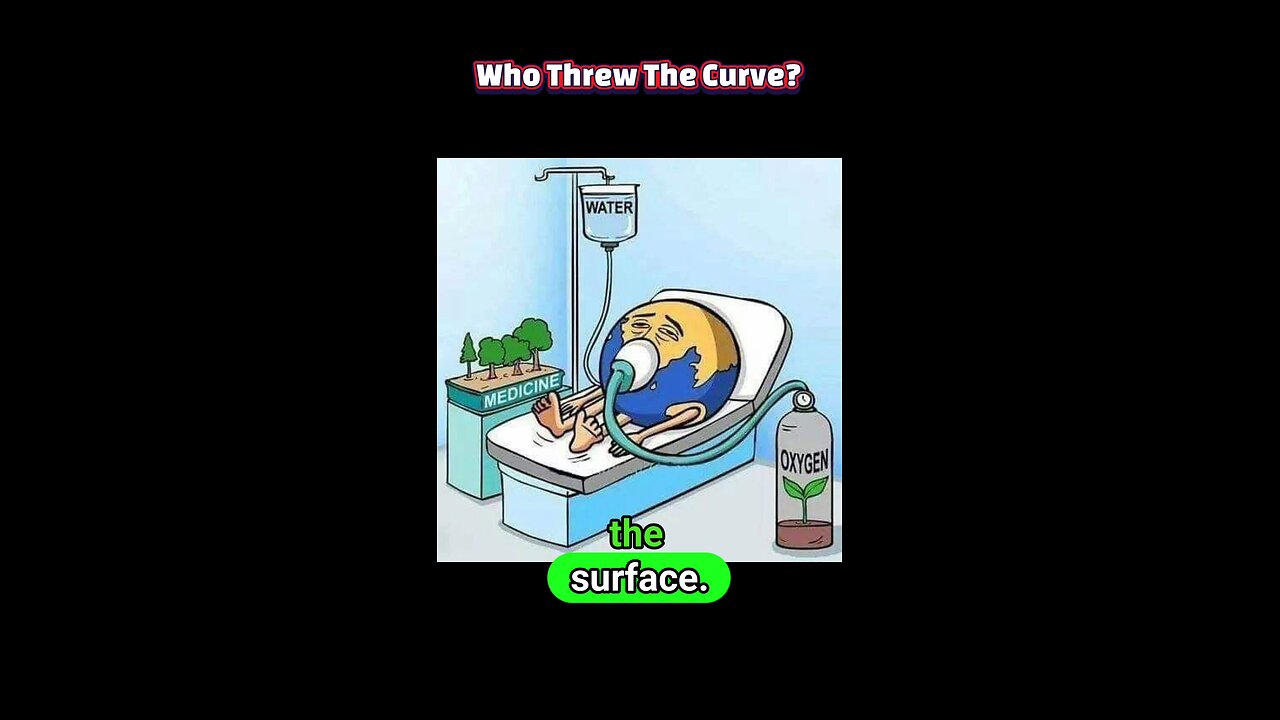Premium Only Content

NASA’s Oxygen Warning: Earth’s Countdown Begins
#NASAWarning #OxygenCrisis #EarthCountdown #ClimateScience #FutureOfEarth #SpaceNews #ScienceAlert #PlanetaryThreat #Astrobiology #EndOfOxygen
Humanity faces a long-term atmospheric threat as scientists warn that Earth’s oxygen-rich atmosphere is not permanent and may begin a permanent decline long before the planet’s final demise, a development highlighted in recent reporting on a study involving NASA researchers. The central claim is stark: as conditions change over geological time, the balance that has sustained complex life could unravel, making this a scientific concern rather than a distant myth.
The physical mechanism behind the warning is straightforward and rooted in stellar and planetary chemistry. As the Sun gradually becomes more luminous, Earth will warm enough that atmospheric carbon dioxide will break down, depriving photosynthetic life of the CO2 it needs to produce oxygen; without persistent photosynthesis, net oxygen production falls and atmospheric oxygen concentrations decline. This chain of processes links solar evolution to terrestrial habitability and implies that planetary life support depends on a delicate, time-limited set of geochemical cycles.
The projected consequences for ecosystems and human society are profound and cascading. Reduced oxygen would erode the protective ozone layer, increase surface ultraviolet radiation, and shift atmospheric chemistry toward high methane and low CO2 regimes that favor only anaerobic organisms, effectively ending the era of complex, multicellular life on the surface. These shifts would not only change which species can survive but would transform climate feedbacks, nutrient cycles, and the very transparency of the sky to life-sustaining sunlight.
Timing estimates carry large uncertainties but emphasize urgency in scientific understanding rather than immediate alarm. Some models place a dramatic drop in oxygen on timescales of roughly a billion years while suggesting the irreversible decline could begin much earlier, perhaps within tens of thousands of years; these ranges reflect differences in model assumptions about biosphere resilience, carbon cycling, and planetary feedbacks. The uncertainty means the primary scientific task is refining models and monitoring Earth system indicators that would signal long-term shifts in photosynthetic productivity and atmospheric chemistry.
The study’s message reframes planetary stewardship: Earth’s habitability is finite and contingent, shaped by astrophysical forces and fragile biospheric processes. The immediate policy implication is investment in Earth observation, fundamental research on carbon and oxygen cycles, and preparing institutions to interpret long-term trends rather than reacting only to short-term crises. Understanding these deep-time risks strengthens our science, sharpens global monitoring priorities, and deepens the urgency of preserving the biosphere that still sustains complex life.
-
 29:51
29:51
Stephen Gardner
17 hours agoYou'll NEVER Believe What Gavin Newsom Just Did to Elon Musk!
21.4K68 -
 2:48:52
2:48:52
Game On!
22 hours ago $9.85 earnedNFL Week 15 Wiseguy Roundtable BEST BETS!
188K10 -
 4:53:49
4:53:49
Joe Donuts Live
7 hours agoThe Mystery Deepens in Alan Wake | Episode 3 |Uncovering the Truth Behind the Darkness
12.1K1 -
 3:28:49
3:28:49
Rebel News
8 hours ago🚨 BREAKING: Suspected TERROR attack at Sydney Chanukah event
84.1K186 -
 17:39
17:39
Clownfish TV
4 hours agoWhy is YouTube PURGING Millions of Channels This Year? Is it AI or WORSE? | Clownfish TV
9.19K24 -

Midnight In The Mountains™
5 hours agoMorning Coffee w/ Midnight & The Early Birds of Rumble | The Hate.... The Violence MUST End Already
19.3K1 -
 LIVE
LIVE
LethalPnda
6 hours agoKim Kardashian is now in Fortnite. Use code "lethalpnda" in the Item Shop!
174 watching -
 9:28
9:28
ThatStarWarsGirl
1 day agoSupergirl Trailer REACTION!
49.5K5 -
 LIVE
LIVE
Lofi Girl
2 years agoSynthwave Radio 🌌 - beats to chill/game to
332 watching -
 3:06:46
3:06:46
Boxin
5 hours agoBoxin + Moogsical RV There Yet!? Take 2! (special guest?)
21.6K